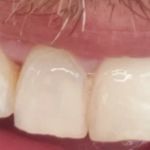- 1 - Understanding-Teeth-Whitening-With-Lemon-And-Baking-Soda
- 2 - Benefits-Of-Lemon-And-Baking-Soda-For-Teeth-Whitening
- 3 - Step-By-Step-Safe-Whitening-Method
- 4 - Precautions-To-Avoid-Dental-Damage
- 5 - Alternative-Natural-Whitening-Options
- 6 - Real-User-Experiences-And-Results
- 7 - Why-Consult-Dentistry-Toothtruth-For-Teeth-Care
1. Understanding Teeth Whitening with Lemon and Baking Soda
Using lemon and baking soda for teeth whitening is a popular natural remedy aimed at removing surface stains and brightening your smile. The mildly abrasive baking soda helps scrub away discoloration, while the acidic lemon juice acts as a bleaching agent.
Though effective when used correctly, it is essential to understand how these ingredients work and the importance of safe application to protect enamel integrity.
2. Benefits of Lemon and Baking Soda for Teeth Whitening
Lemon and baking soda offer a cost-effective and accessible way to whiten teeth at home. Baking soda’s gentle abrasiveness removes plaque and surface stains, while lemon juice’s natural acidity can lighten discoloration.
Additionally, both ingredients have antibacterial properties that may contribute to fresher breath and healthier gums when used appropriately.
These benefits make the combination attractive for those seeking natural dental care solutions.
3. Step-by-Step Safe Whitening Method
To whiten teeth safely with lemon and baking soda, start by mixing a small amount of baking soda with freshly squeezed lemon juice to form a paste. Use a soft toothbrush to apply the mixture gently on your teeth for no more than one minute.
Rinse thoroughly with water afterward and follow with brushing using regular toothpaste to neutralize acidity. Limit this treatment to once or twice a week to minimize enamel erosion risk.
Following these steps ensures effective whitening while preserving dental health.
4. Precautions to Avoid Dental Damage
Excessive or improper use of lemon and baking soda can harm tooth enamel, leading to sensitivity and increased risk of cavities. The acidic nature of lemon juice can erode enamel if left on teeth too long or applied frequently.
Always dilute lemon juice adequately, avoid aggressive scrubbing, and monitor your teeth for sensitivity or discomfort. Consult a dental professional if unsure about suitability.
Taking precautions helps maintain a bright smile without compromising oral health.
5. Alternative Natural Whitening Options
If lemon and baking soda seem too harsh, other natural options like activated charcoal, coconut oil pulling, or hydrogen peroxide mouth rinses can provide gentler whitening effects. These alternatives often come with fewer risks of enamel damage.
Exploring diverse methods allows you to find the best fit for your dental care routine and whitening goals.
Combining professional advice with natural remedies creates a balanced approach to teeth whitening.
6. Real User Experiences and Results
Many users report visible improvements in tooth brightness after cautiously using lemon and baking soda treatments. For instance, one user described how weekly applications helped reduce coffee stains over a month while maintaining enamel health by following safety guidelines.
Others emphasize the importance of moderation and complementing the treatment with regular dental hygiene.
These experiences highlight that natural whitening can be effective if done responsibly.
7. Why Consult Dentistry Toothtruth for Teeth Care
Dentistry Toothtruth offers expert insights and trusted recommendations on safe and effective teeth whitening methods. Our resources guide you in selecting the best natural remedies and professional treatments tailored to your needs.
Visit Dentistry Toothtruth to access comprehensive advice, product reviews, and personalized care tips for a healthier, brighter smile.
Partner with us for informed, safe, and effective teeth whitening at home.







 Maui Whitening Orlando4.0 (32 review)
Maui Whitening Orlando4.0 (32 review) Bloomington Southside Dental Care3.0 (26 review)
Bloomington Southside Dental Care3.0 (26 review) Christiana Dental Center4.0 (650 review)
Christiana Dental Center4.0 (650 review) Carolina Dental Arts - New Bern Ave4.0 (152 review)
Carolina Dental Arts - New Bern Ave4.0 (152 review) Equitas Health Short North Medical Center3.0 (96 review)
Equitas Health Short North Medical Center3.0 (96 review) Prosthodontics of Madison - Kendra Schaefer, DMD & Christine Roenitz, DMD4.0 (25 review)
Prosthodontics of Madison - Kendra Schaefer, DMD & Christine Roenitz, DMD4.0 (25 review) The Importance of Oral Health Education During Pregnancy for a Healthy Pregnancy
The Importance of Oral Health Education During Pregnancy for a Healthy Pregnancy Best Tips for Brushing Your Teeth Properly for Healthy Gums: Essential Techniques for Oral Health
Best Tips for Brushing Your Teeth Properly for Healthy Gums: Essential Techniques for Oral Health Why Skipping Dental Checkups Can Lead to Bigger Oral Health Problems
Why Skipping Dental Checkups Can Lead to Bigger Oral Health Problems Advantages of Porcelain Dental Restorations
Advantages of Porcelain Dental Restorations How Can Diabetes Cause Tooth and Gum Problems? Preventing and Managing Oral Health Issues
How Can Diabetes Cause Tooth and Gum Problems? Preventing and Managing Oral Health Issues Healthy Habits for Promoting Good Oral Health and Hygiene: Tips for a Healthy Smile
Healthy Habits for Promoting Good Oral Health and Hygiene: Tips for a Healthy Smile